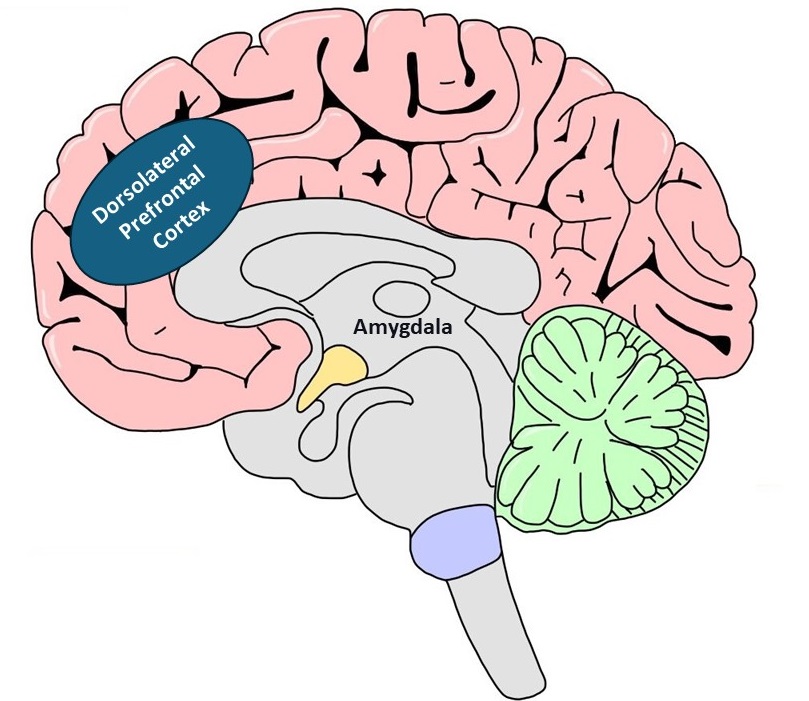Understanding the physiology of decision-making and the complex cognitive process involving multiple brain structures and physiological responses is essential. Extensive research has focused on the neuroscience of decision-making, revealing intricate connections between our brain, body, and choices.
Key regions involved in decision-making include the anterior cingulate cortex (ACC), orbitofrontal cortex, ventromedial prefrontal cortex and amygdala. These brain areas work together to evaluate options, weigh potential outcomes, and ultimately guide our choices. Neuroimaging studies show distinct neural activation patterns in these regions, depending on whether decisions are made based on personal volition or external instructions.
The parietal cortex plays a role in forming a decision and signalling its degree of certainty. This indicates that our brains make choices and assess the confidence level of those decisions. Additionally, the ACC evaluates past reinforcement information to guide future actions, highlighting the significance of learning from previous experiences in decision-making.
Emotions also play a substantial role in decision-making, particularly in uncertain situations. The somatic marker hypothesis suggests that emotions, expressed as bodily states, aid decision-making by marking different options as advantageous or disadvantageous. This interplay between neural systems that elicit emotional states and those that connect these states to decision outcomes illustrates the complex relationship between our emotions and choices.
Another intriguing area of study is the relationship between stress and decision-making. The brain’s response to potential threats, mediated by the hypothalamic-pituitary-adrenal (HPA) axis, the autonomic nervous system, and frontostriatal circuits, is essential for decision-making throughout life.
Notably, stress can have both positive and negative effects on decision-making. Mild anxiety can increase alertness and improve decision-making performance by activating the sympathetic nervous system. However, the optimal level of arousal for performance varies depending on the task’s difficulty. Conversely, acute stress can impair decision-making, leading to hasty and unsystematic choices. Physiological responses offer valuable insights into the decision-making process.
Electrophysiological signals, including brain activity and heart rate variability, can characterise and evaluate experiences in various environments, including virtual worlds. These physiological indicators provide a rich source of information about how our bodies respond to different decision-making scenarios.

The amygdala plays a crucial role in complex decision-making processes, extending far beyond its well-known function in emotional processing. This almond-shaped structure in the brain is intricately involved in evaluating the emotional significance of stimuli, processing information from various sensory systems, and influencing our perceptions and responses to different situations.
The amygdala significantly impacts decisions, especially those involving emotional content or risk assessment, by triggering autonomic responses to emotional stimuli, including monetary rewards and punishments.
Research has shown that the amygdala is critical in associating stimuli with their emotional value, a function that directly affects decision-making. Patients with amygdala damage often exhibit impaired decision-making abilities, especially in situations that involve emotional components or risk evaluation. These individuals may struggle to utilise ‘somatic marker’ type cues, which are bodily responses to emotional stimuli that guide future decisions. As they lack the autonomic responses to reward and punishment typically generated by a healthy amygdala, this deficit can lead to poor judgment and decision-making in laboratory tests and real-world scenarios.
Furthermore, the amygdala’s role in complex decision-making extends to social interactions and judgments. It influences how we interact with others and make choices that affect our relationships. The amygdala is also involved in more nuanced aspects of decision-making, such as risk aversion, which is the tendency to avoid risks, and loss aversion.
Studies have found that individuals with heightened amygdala activity tend to be more risk-averse. In contrast, those with amygdala damage may show a reduced aversion to monetary loss. This intricate involvement in various aspects of decision-making highlights the amygdala’s significance in orchestrating complex cognitive and behavioural functions, ultimately shaping our choices and actions in multifaceted ways.
Tomorrow, I will share with you the importance of Suplimention and focus on what I believe is essential to maintaining good health.
